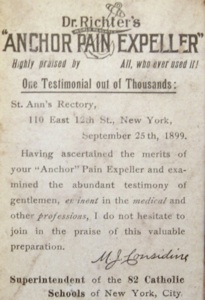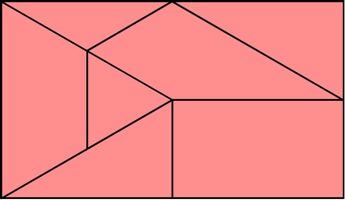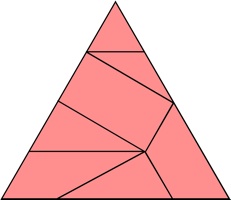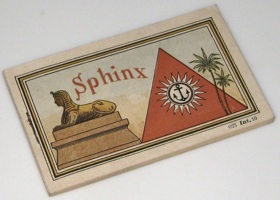Sphinx
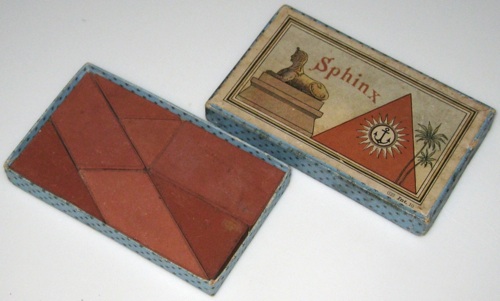
a.k.a. Lott's Stone Puzzle, Anchor Puzzle No. 15 (sometimes 16)
F. Ad. Richter & Co., Germany, late 1890's / early 1900's
(cardboard box 2.7" x 4.4" x 9/16", 7 stone pieces, and booklet;
the Anchor Puzzle Book
dates this puzzle as first made in 1899;
similar in construction to the
Anchor Puzzle Tangram;
the inside of the cover shows how to pack the pieces into the box;
a second way of packing the pieces into the box is shown by the figure above;
the inside of the bottom has a testimonial dated 1899;
booklet has multi-language text inside the covers and on pages A to Q at the front,
and 48 pages with 135 shapes to make,
the first of which is the pyramid of
square root 3 times the height
of the rectangle,
and where the last 16 pages are shapes made in combination with another puzzle;
Note:
The box above does not show a number.
However this puzzle was commonly listed by in Richter literature as number 15,
and 15 appears on the boxes of some versions.
It was also made with a box that has the same graphics as the one above with
"No. 16."
above the word Sphinx.
Sphinx, Continued
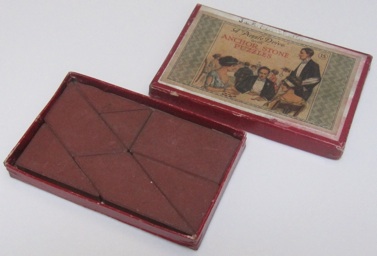
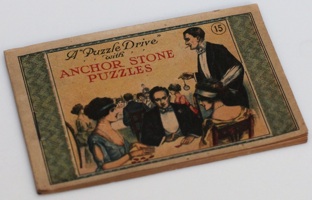
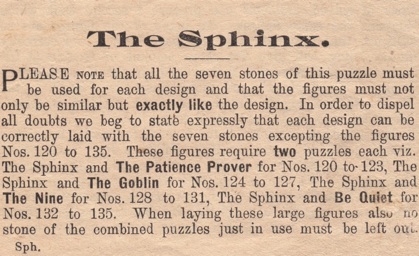
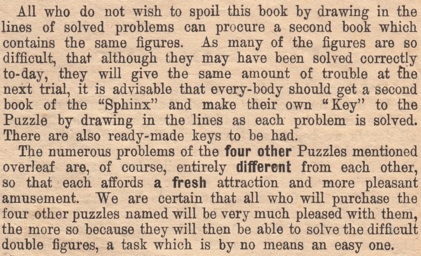
Puzzle pieces the same as the first page but box is 2.75" x 4.9" x 1/2";
booklet has the same 48 pages of problems but no additional text;
the inside of the cover shows how to pack the pieces into the box;
directions are on a separate two sided sheet that is slightly smaller than booklet pages.
Sphinx, Continued
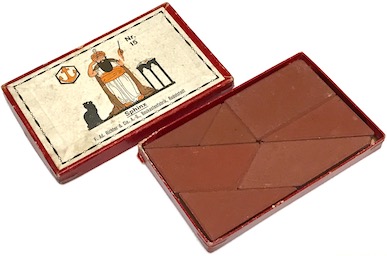
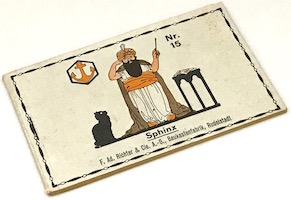
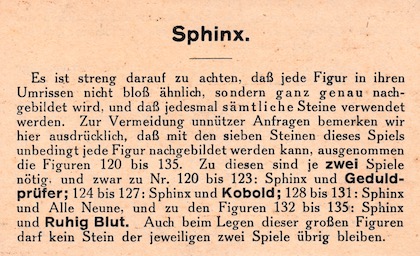
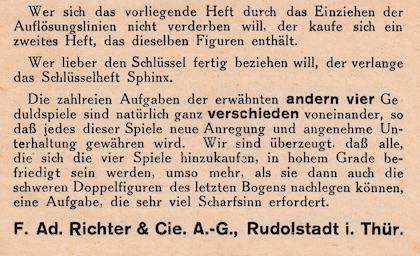
Puzzle pieces the same as the first page;
booklet has the same 48 pages of problems but no additional text;
the inside of the cover shows how to pack the pieces into the box;
directions are on a separate two sided sheet that is slightly smaller than booklet pages.
The Lott's Stone Puzzle Version of the Sphinx
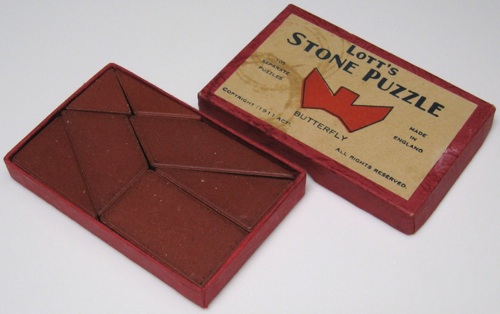
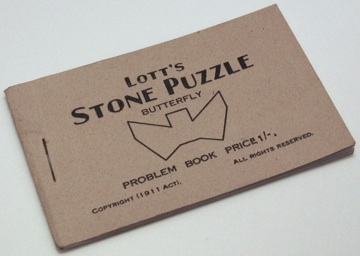
"Lott's Stone Puzzle", copyright 1911, Lott's Bricks, LTD, Watford, England.
(cardboard box 2.7" x 4.2" x 9/16", 7 stone pieces, and booklet;
the booklet pages 1 and 2 are an introduction,
the last page invites one to write for a solution to another puzzle,
and pages 3 through 31 show 105 shapes to make,
where page 31 shows the rectangle for how to pack the pieces into the box)

